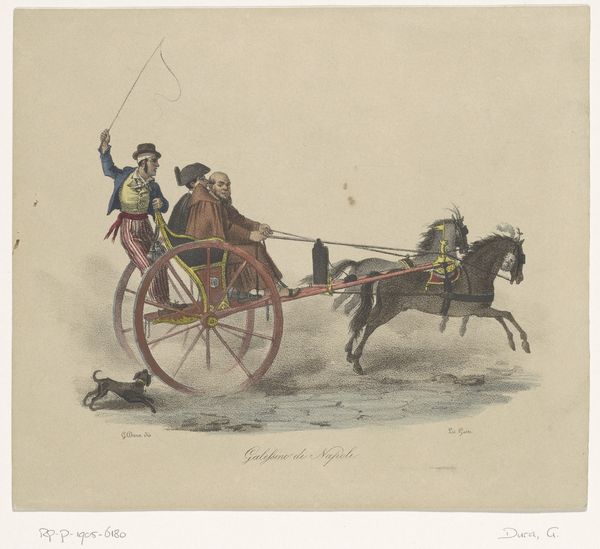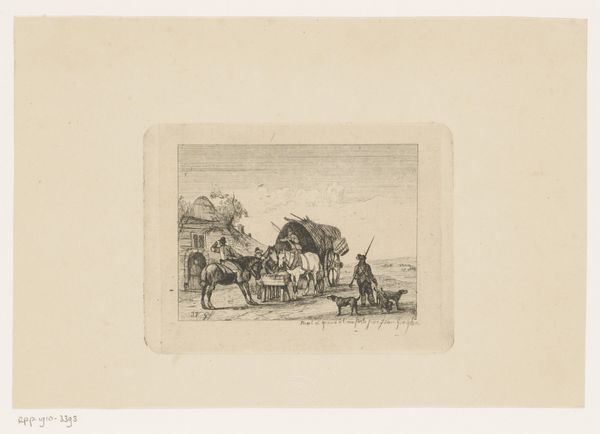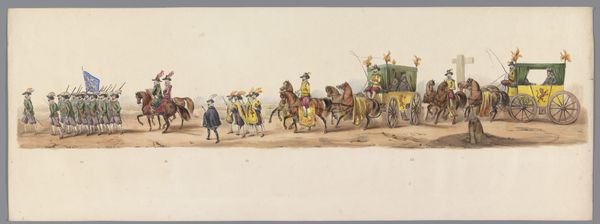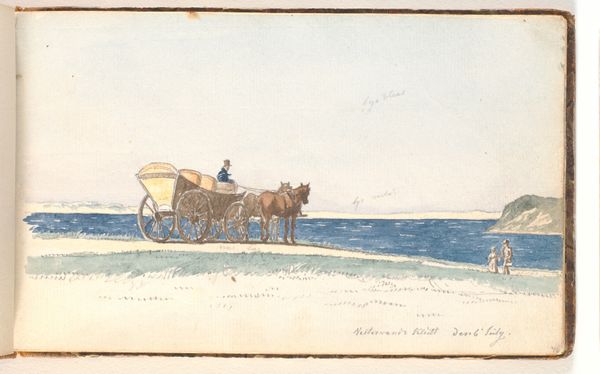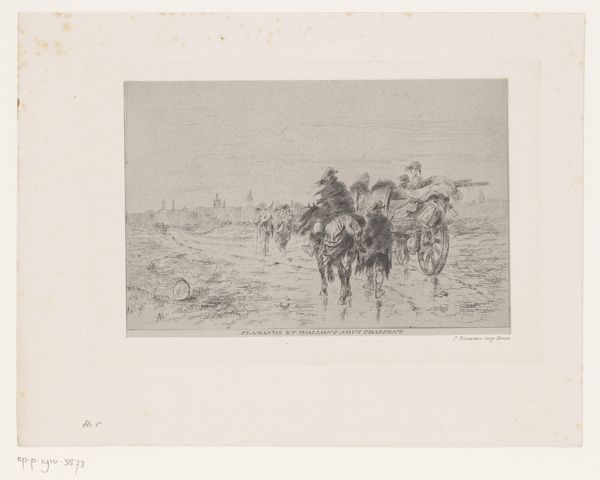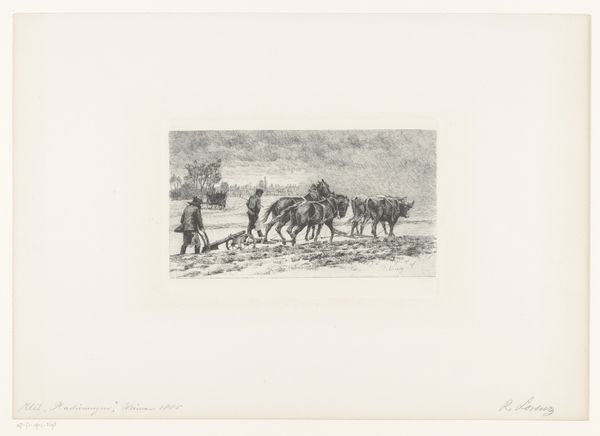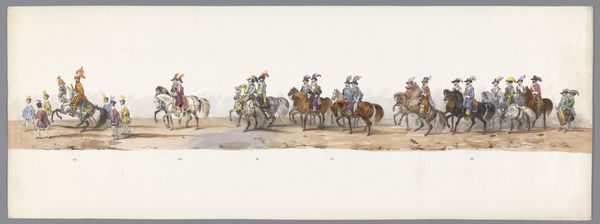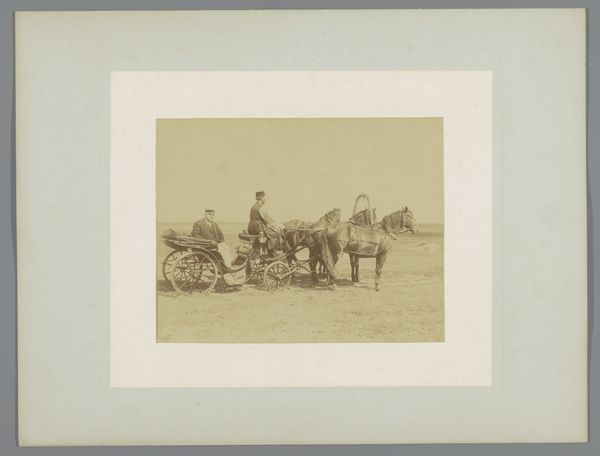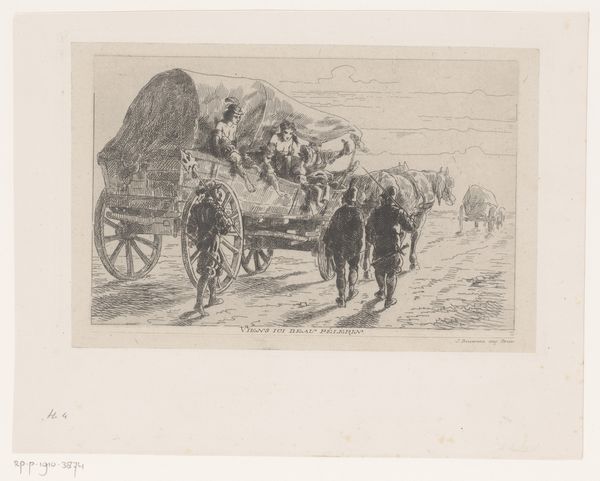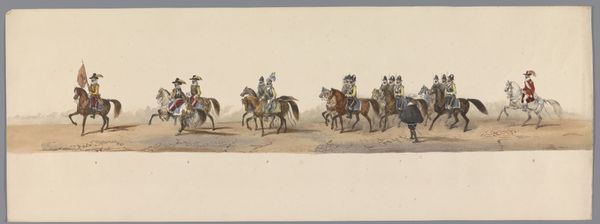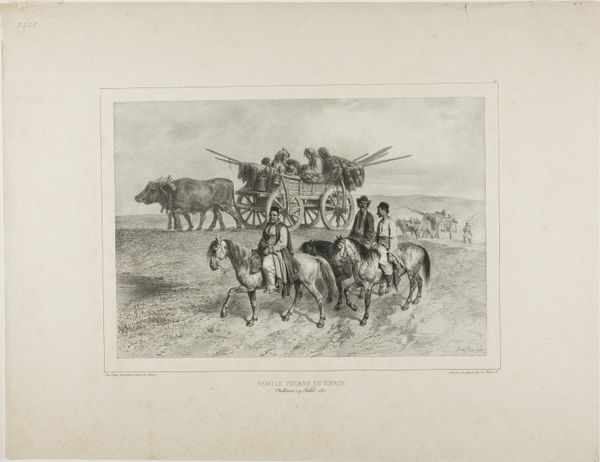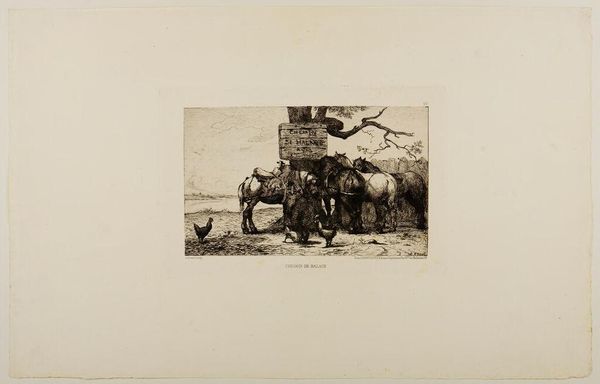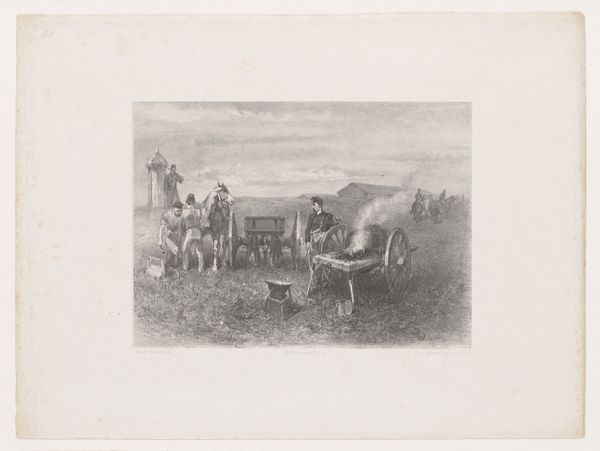
print, etching, photography
#
portrait
#
pale palette
#
pastel soft colours
#
muted colour palette
# print
#
etching
#
landscape
#
white palette
#
photography
#
pastel tone
#
watercolour bleed
#
watercolour illustration
#
genre-painting
#
remaining negative space
#
soft colour palette
#
watercolor
#
realism
Dimensions: height 309 mm, width 384 mm
Copyright: Rijks Museum: Open Domain
Editor: We're looking at "Three Men and a Horse-Drawn Cart, probably in Italy," created between 1880 and 1890 by Eugenio Interguglielmi. It’s a photographic print, perhaps even an etching. The coloring is quite subtle. It feels…dreamlike. What stands out to you most about its composition? Curator: I’m drawn to the relationship between the ornately decorated cart and horse and the expansive negative space. The muted colors create a visual tension with the detailed embellishments on the cart, foregrounding questions about artifice and authenticity. Notice how the perspective flattens the background. Editor: Yes, that's so striking! It's like the figures are pasted onto a postcard. What does this flatness contribute to the overall effect? Curator: The lack of depth emphasizes the image's surface, drawing attention to its two-dimensionality. This challenges our perception, demanding a reconsideration of what constitutes representation. We should also notice the diagonal axis that stretches across the picture. Editor: I see what you mean. It almost makes it feel more like a design, carefully constructed on the picture plane. Do you think that's intentional? Curator: Precisely! The arrangement of elements, the interplay of light and shadow – they all point toward a self-aware artistry. It invites a formalist reading, one that transcends mere depiction. How do the wheel spokes, for instance, speak to us? Editor: It is indeed quite a complex interaction! Thanks for that perspective. Now I will never look at a muted palette in quite the same way! Curator: A valuable insight indeed! We can also further analyze the interplay between figure and ground.
Comments
No comments
Be the first to comment and join the conversation on the ultimate creative platform.
